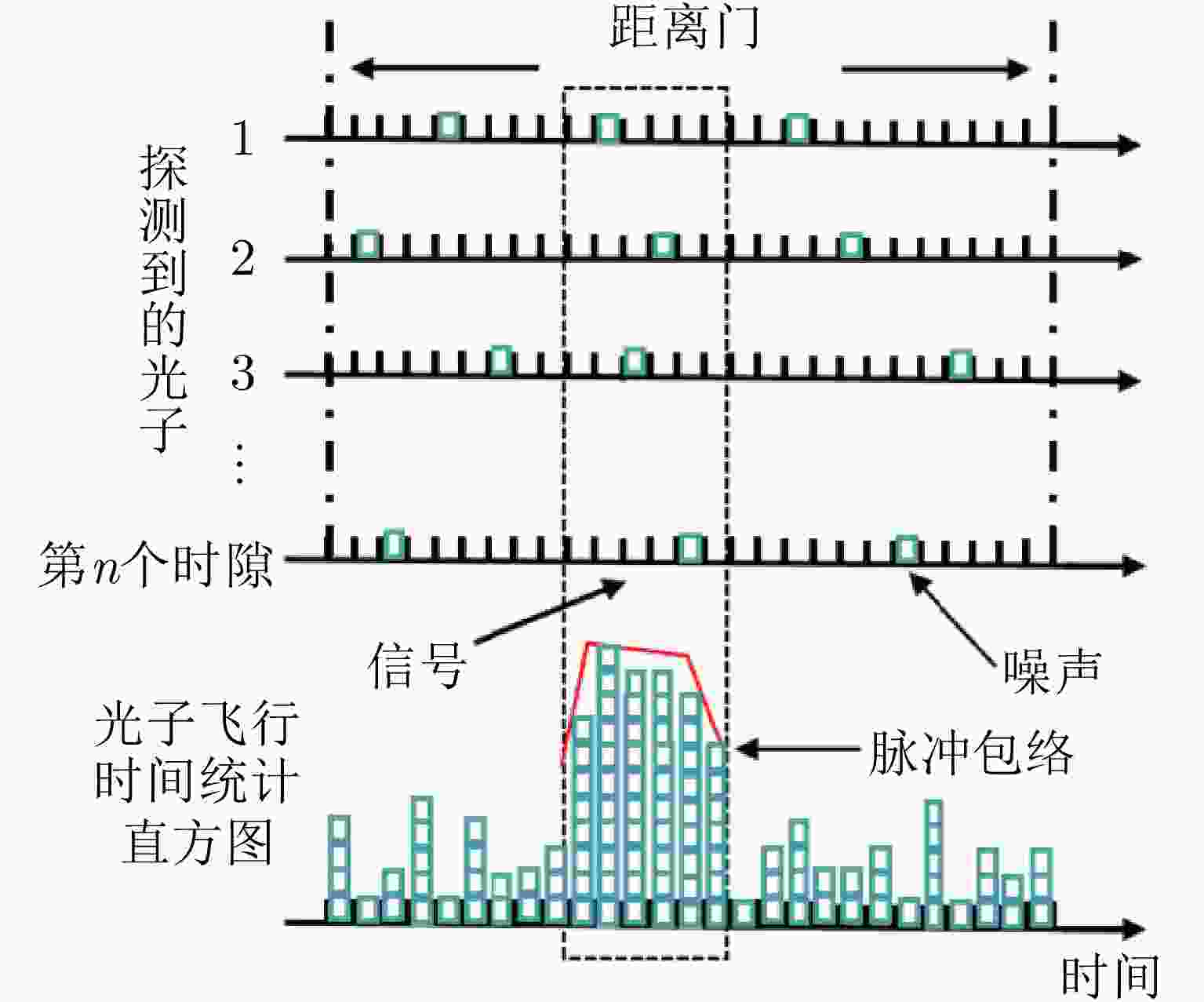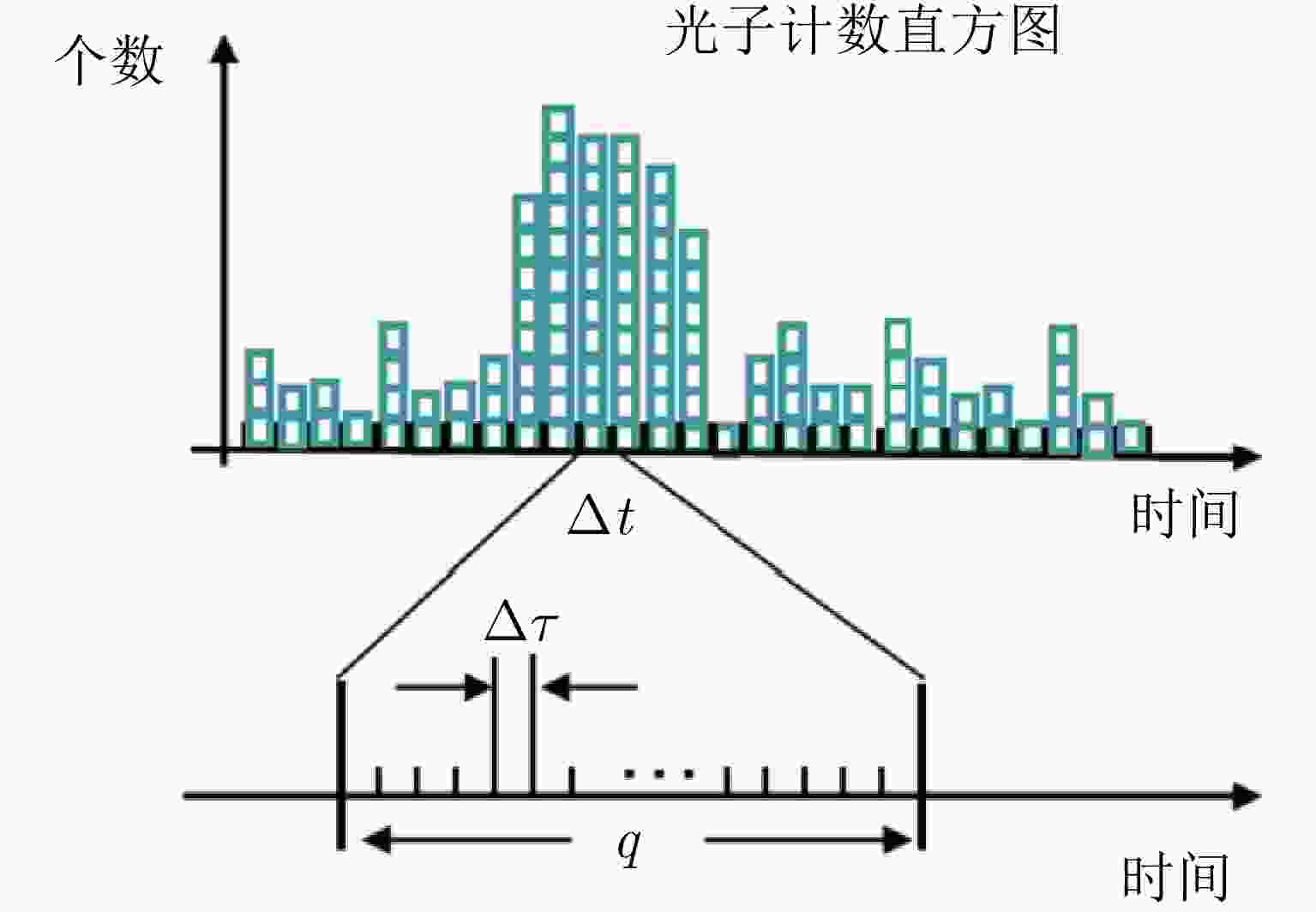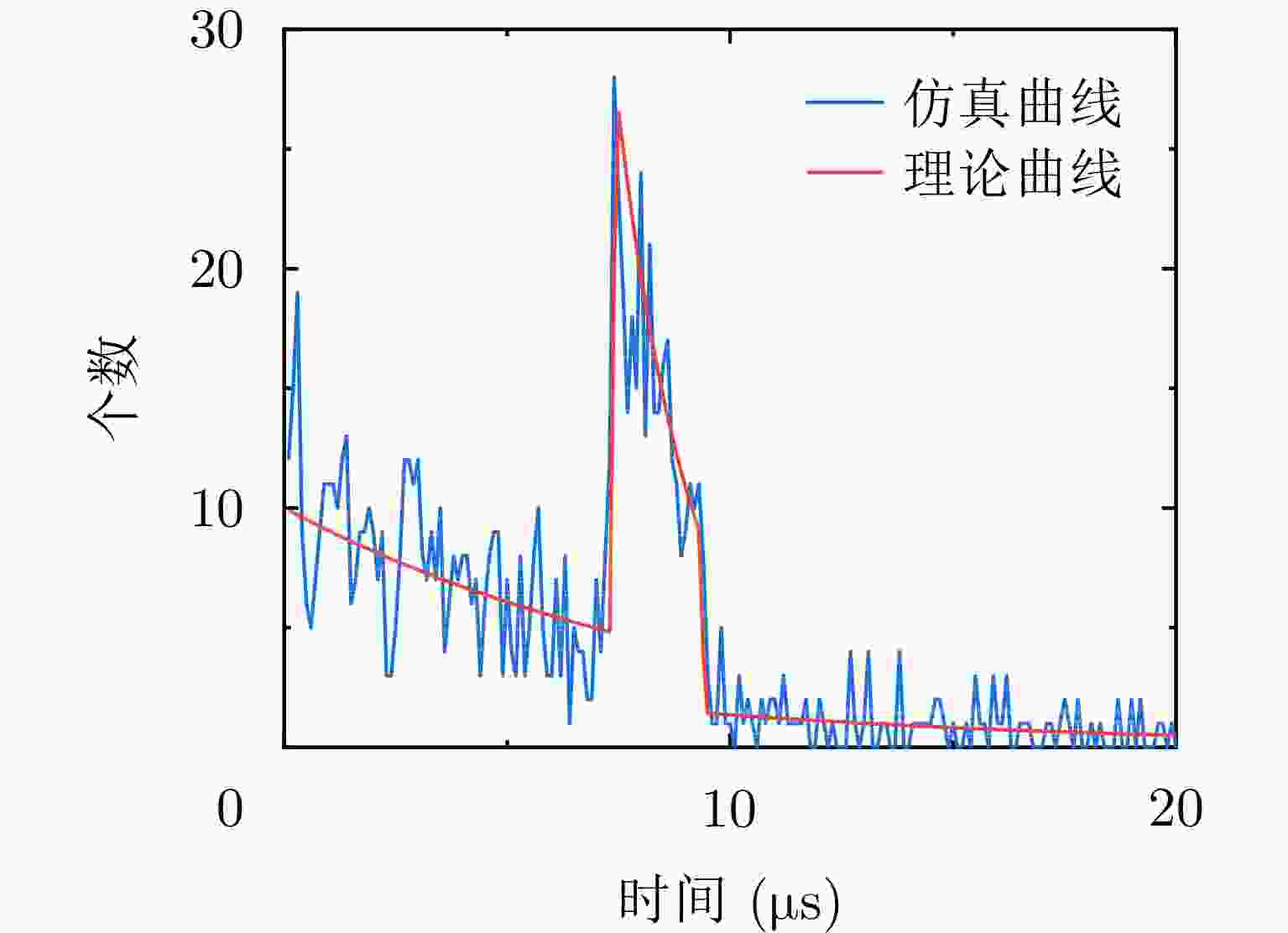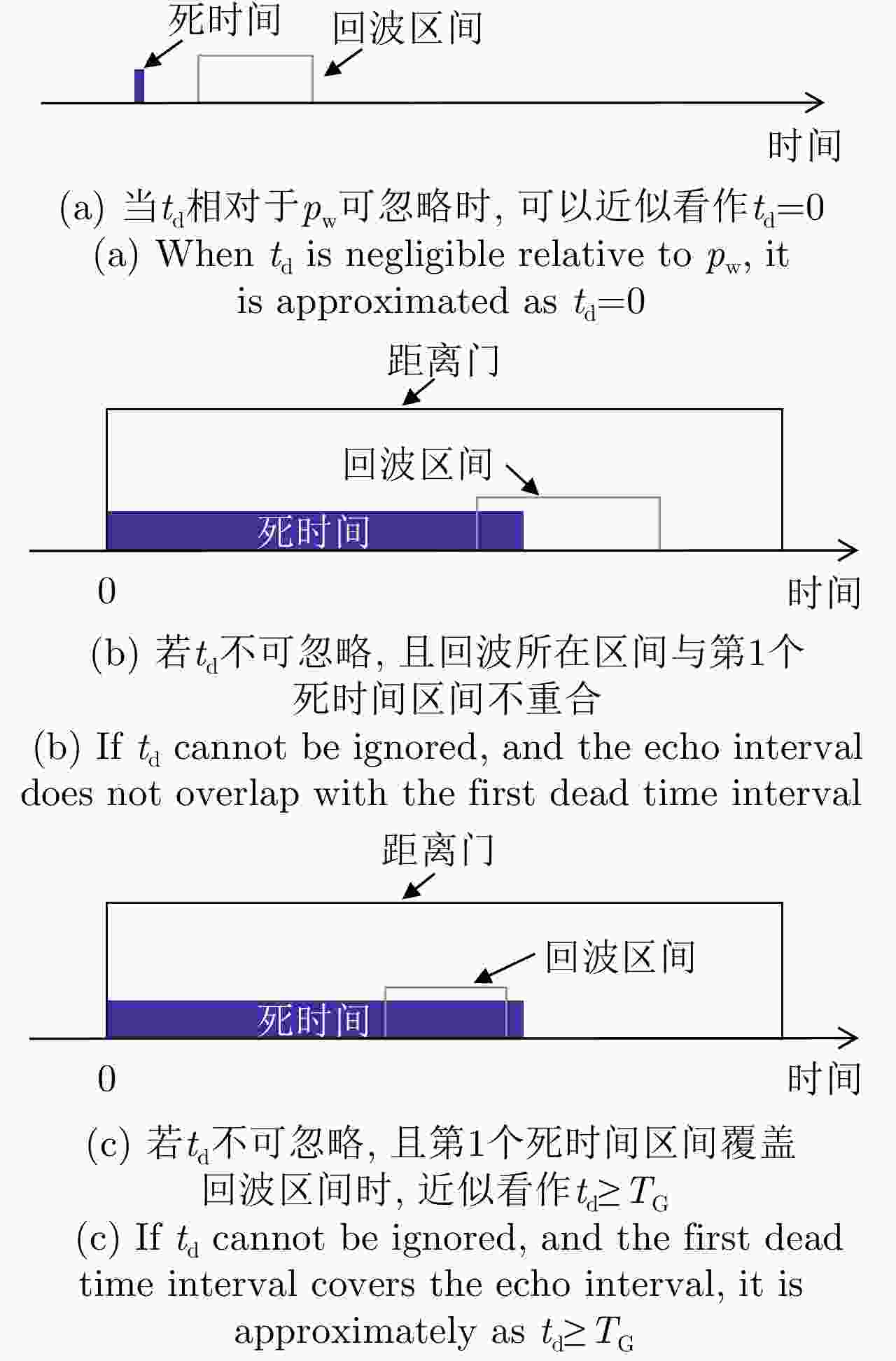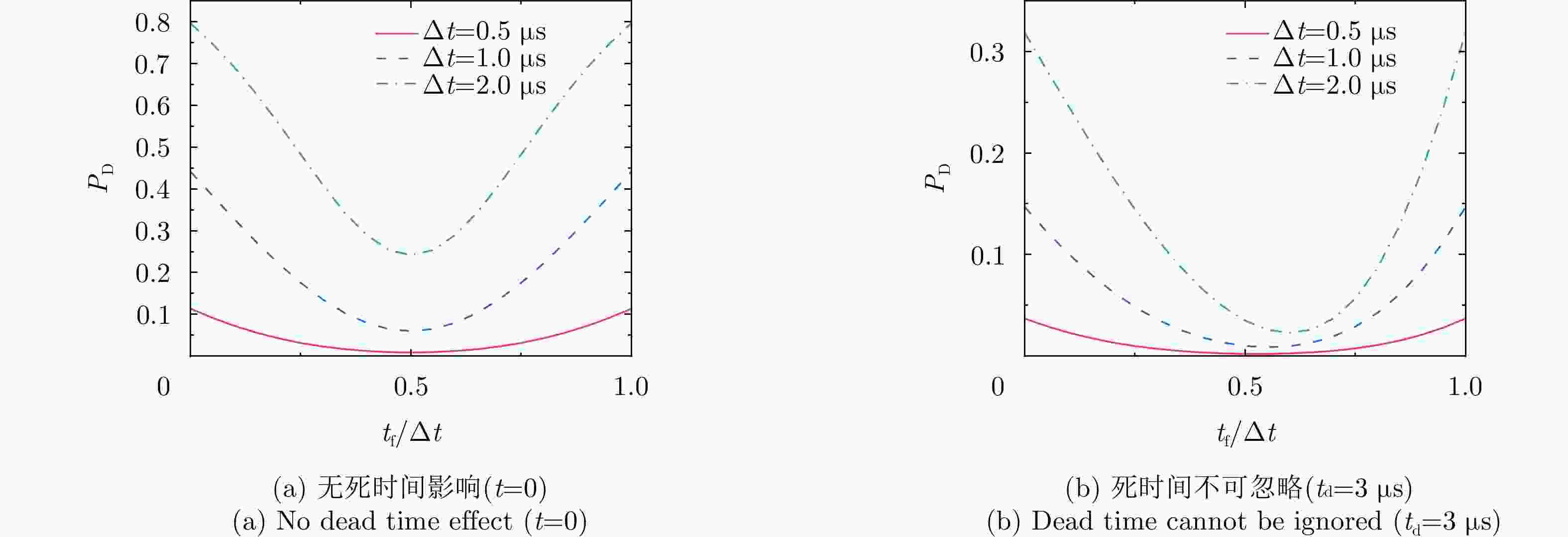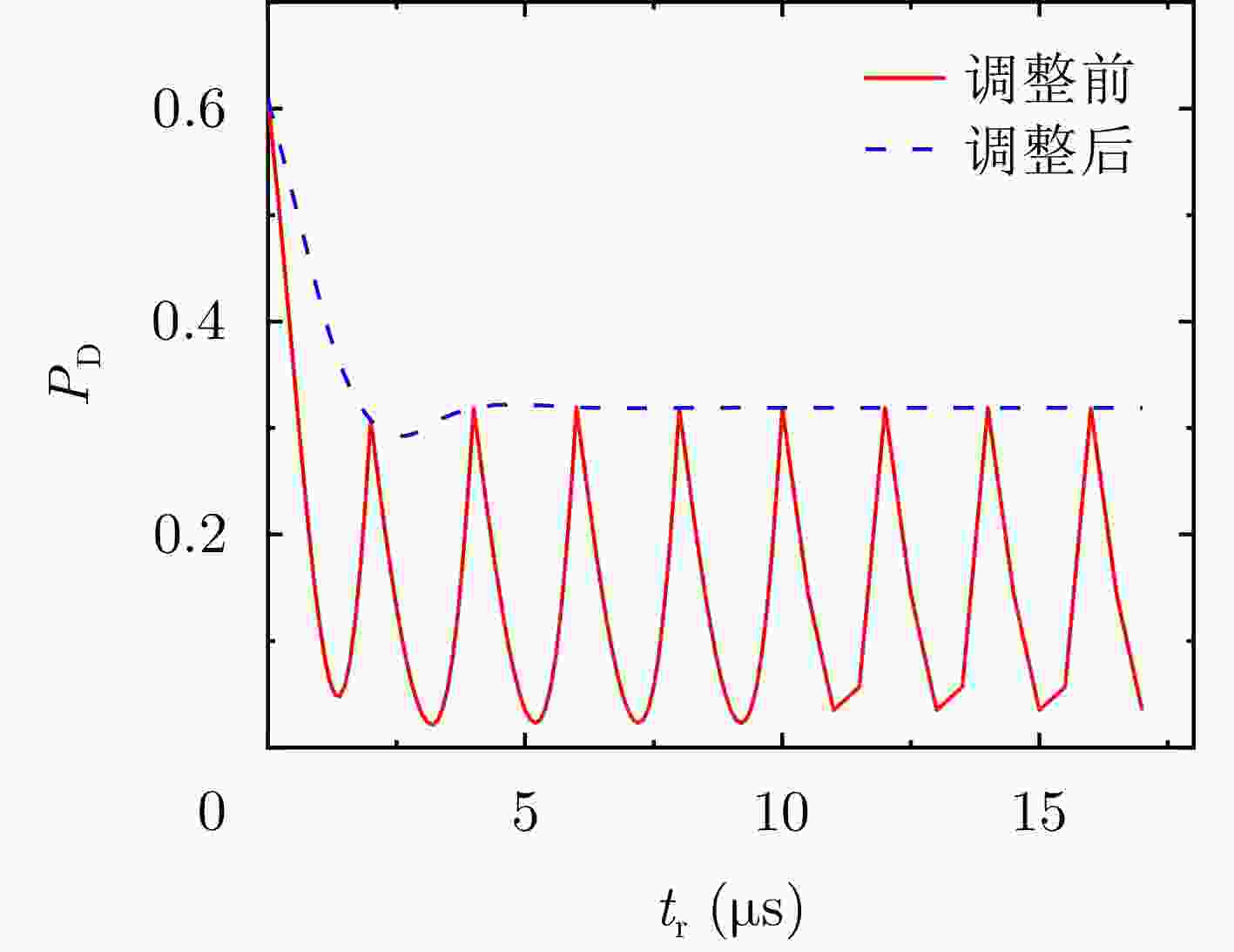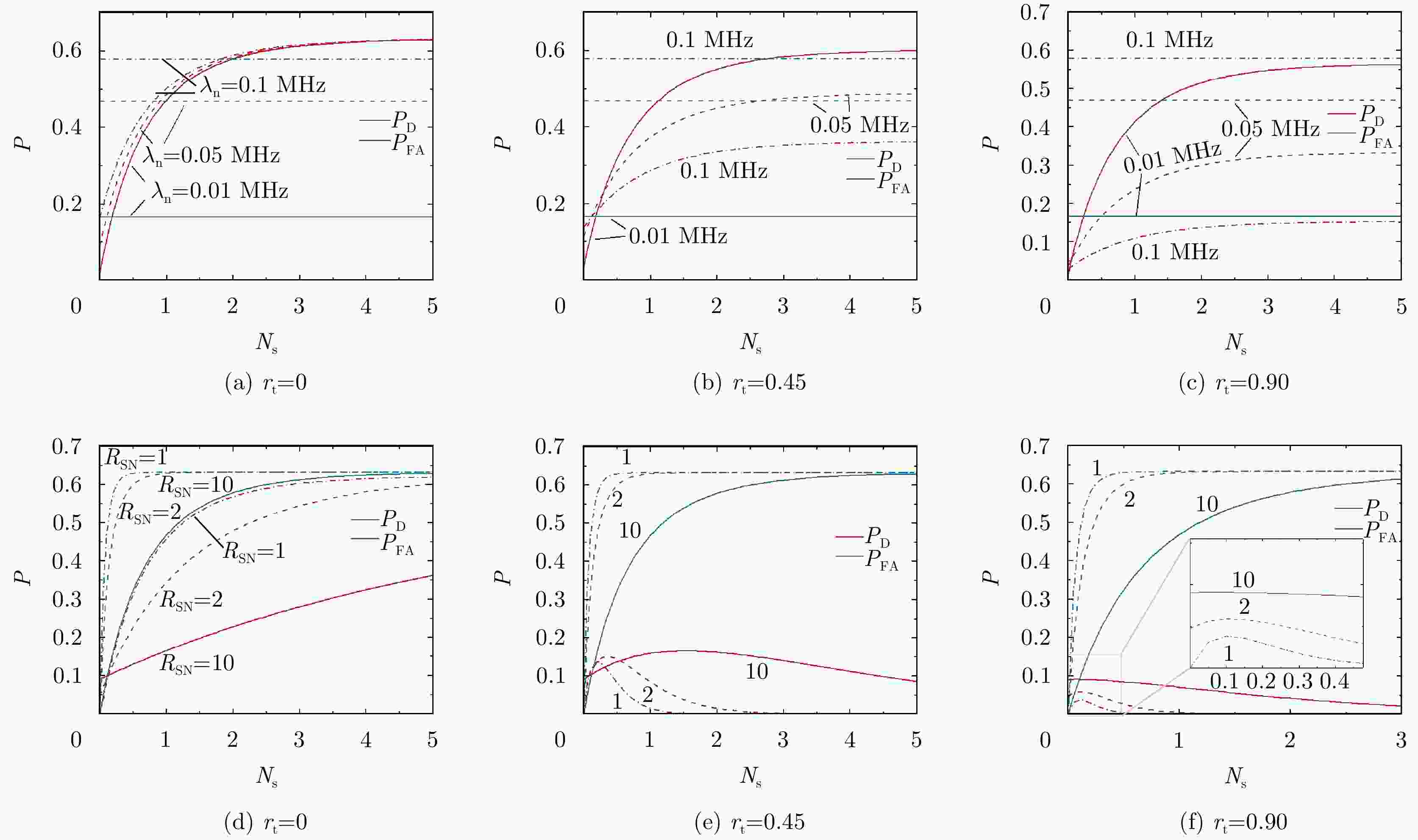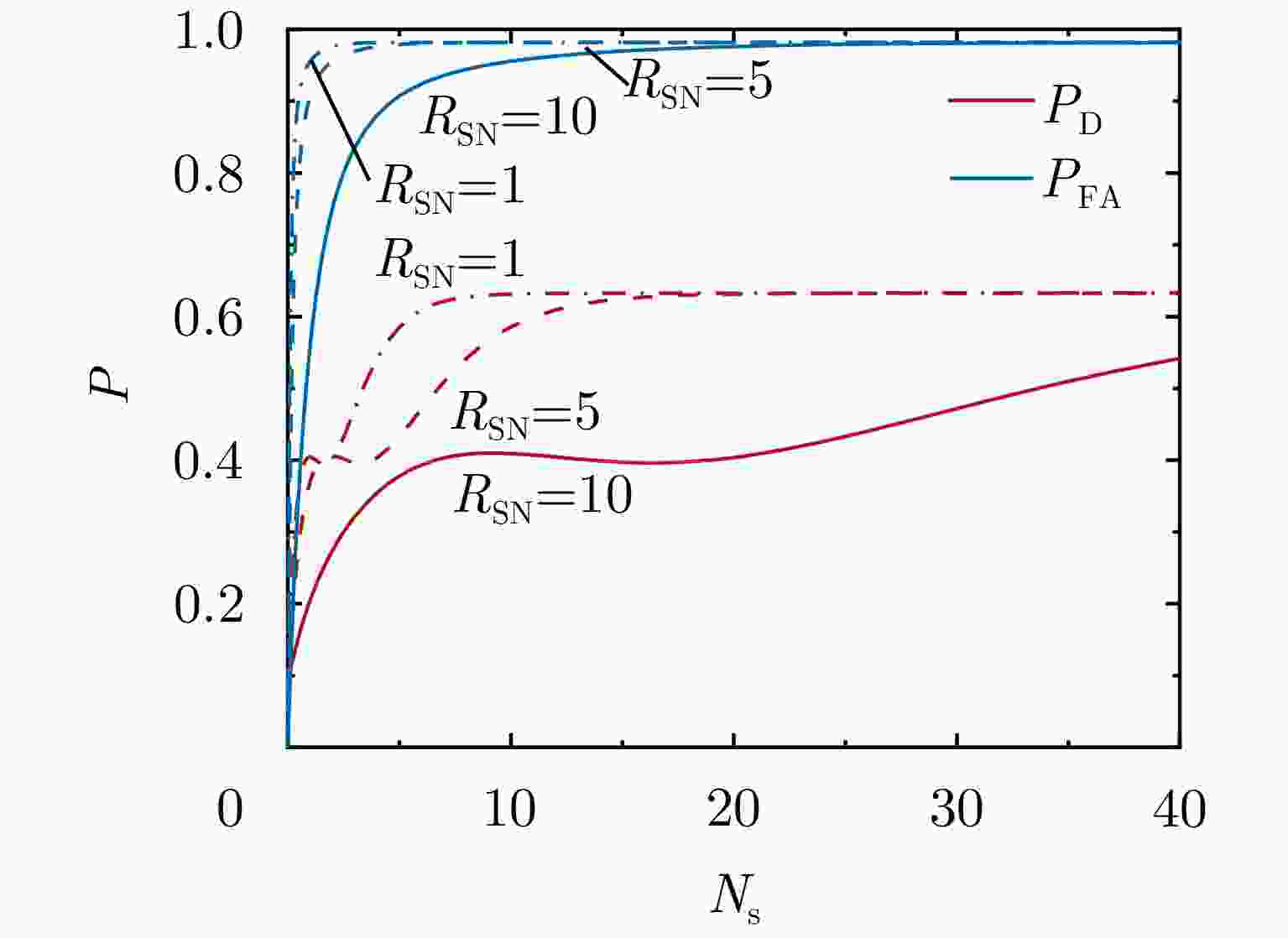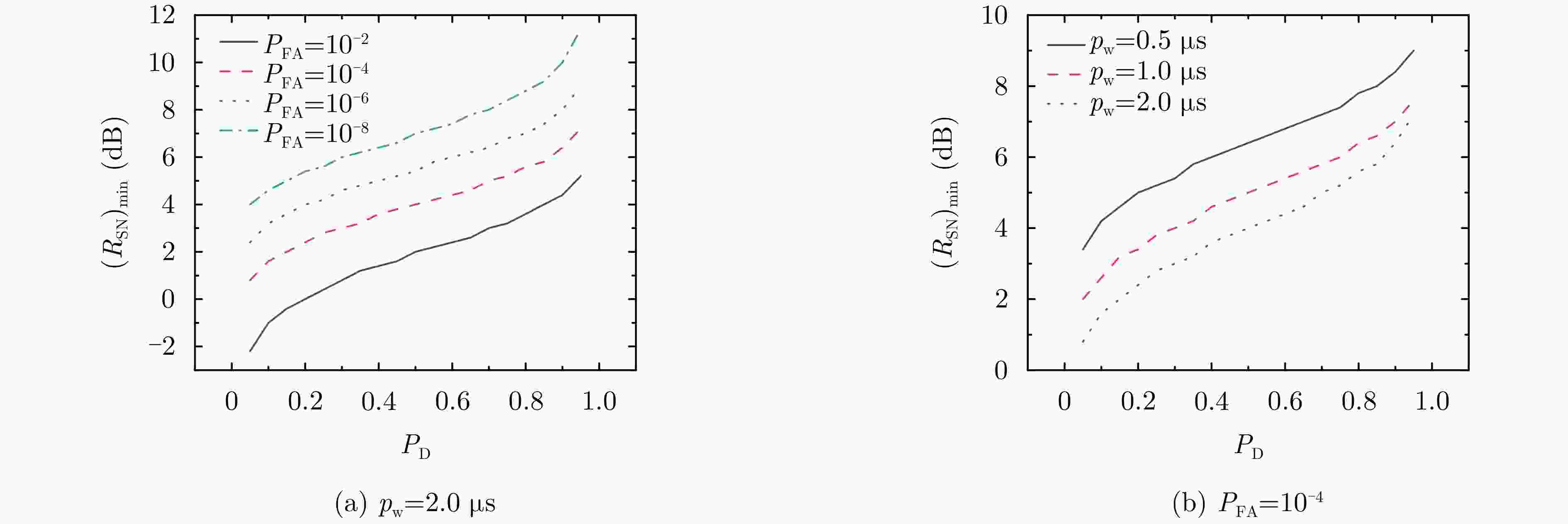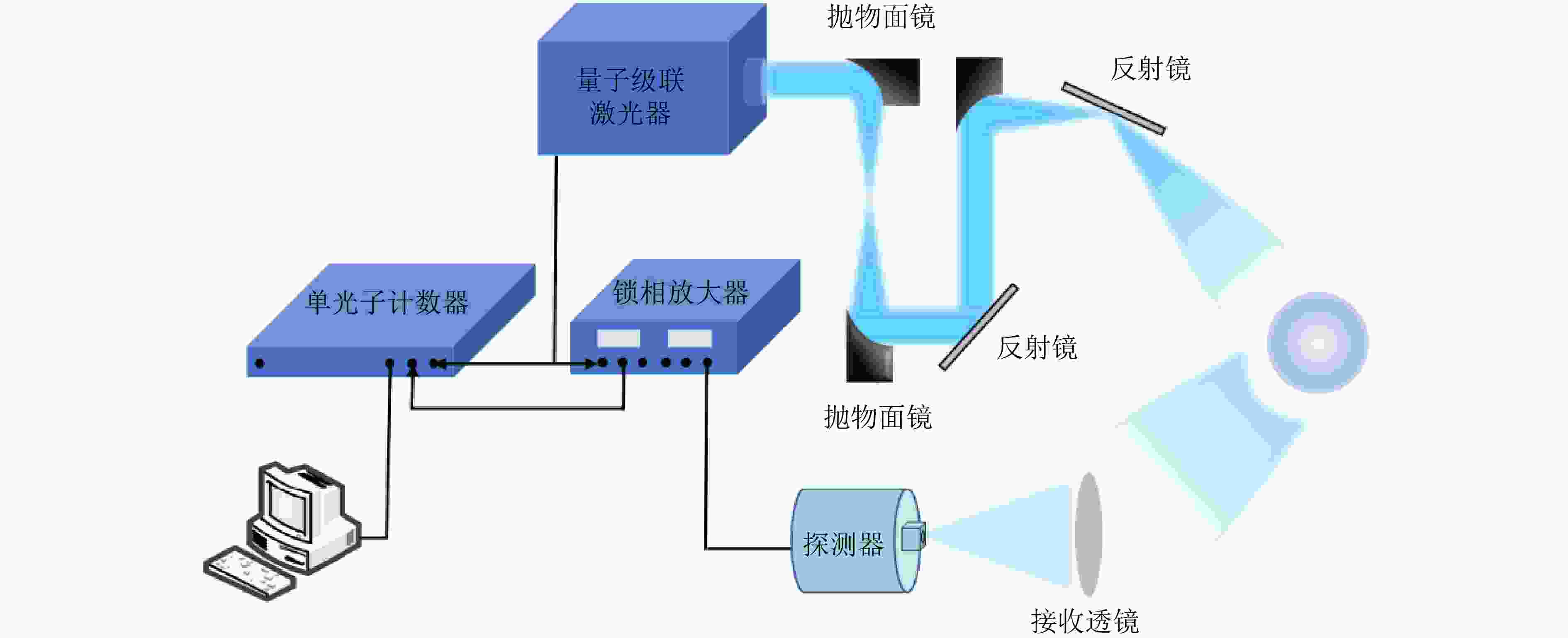Research on Direct Detection Method and Performance of Single-photon Counting Terahertz Radar
-
摘要: 针对远距离非合作目标探测,现有太赫兹雷达由于受到发射机功率低、大气衰减效应等因素影响,其作用距离有限,难以满足对目标的预警探测应用需求。为提升太赫兹雷达探测能力,该文研究了基于单光子探测技术的目标超灵敏探测方法,利用单光子探测器替代传统雷达接收机,有望显著提升太赫兹雷达的作用距离。首先,该文分析了太赫兹单光子雷达信号光子数的统计规律,从微观角度阐述了目标的回波特性,进一步,结合超导量子电容探测器的特点,建立了太赫兹单光子目标探测模型;此外,推导得到太赫兹单光子雷达目标检测性能数学表达式,并通过仿真实验对目标检测性能进行了验证和分析,获得了雷达检测性能曲线;最后开展了时间分辨太赫兹光子计数原理验证实验,通过回波脉冲计数的方式实现了目标高精度测距。该文工作将为太赫兹频段超灵敏探测技术及单光子雷达系统的研究与发展提供支撑。Abstract: The conventional terahertz radar suffers from limited operation range for long-distance, noncooperative target detection due to the low transmitter power and atmospheric attenuation effect, both of which pose a hindrance in meeting the requirements of warning detection applications. To improve the radar detection capability, this paper studies an ultrasensitive target detection method based on single-photon detectors to replace traditional radar receivers. The method is expected to considerably expand the operation range of terahertz radars. First, the statistical law of the number of echo photons of a terahertz single-photon radar system is analyzed, and the echo characteristics of the target are expounded from a microscopic perspective. Furthermore, a terahertz single-photon target detection model, incorporating the characteristics of a quantum capacitor detector, is established. In addition, the mathematical expression of the target detection performance is derived, and the performance is evaluated via simulations. Further, a target detection performance curve is obtained. Finally, a time-resolved terahertz photon-counting mechanism experiment is performed, wherein we realize high-precision ranging by counting echo pulses. This work can provide support for the research and development of ultrasensitive target detection technologies and single-photon radar systems in the terahertz band.
-
Key words:
- Terahertz radar /
- Sing-photon radar /
- Single-photon counting /
- Detection model /
- Dead time
-
图 13 单脉冲探测时检测概率和虚警概率随信号平均光子数的变化曲线((a)、(b)和(c)中曲线分别以噪声光子率$ {\lambda _{\text{n}}} $:$ 0.01{\text{ MHz}} $(点划线),$ 0.05{\text{ MHz}} $(划线),$ 0.1{\text{ MHz}} $(实线)区分;(d)、(e)和(f)中曲线分别以信噪比$ {R_{{\text{SN}}}} $:1(点划线),2(划线),10(实线)区分)
Figure 13. The detection probability and false alarm probability versus the mean signal photons$ {N_{\text{s}}} $ (the curves Fig. (a), Fig. (b) and Fig. (c) are differentiated by the noise photon rate function $ {\lambda _{\text{n}}} $ marked with $ 0.01{\text{ MHz}} $ (dotted line), $ 0.05{\text{ MHz}} $ (dotted line), $ 0.1{\text{ MHz}} $ (solid line); The curves from Fig. (d), Fig. (e) and Fig. (f) are differentiated by the signal to noise ratio $ {R_{{\text{SN}}}} $ marked with 1 (dotted line), 2 (dotted line), 10 (solid line))
-
[1] 王宏强, 罗成高, 邓彬, 等. 太赫兹雷达前沿探测成像技术[J]. 遥测遥控, 2021, 42(4): 1–17. doi: 10.12347/j.ycyk.20210419001.WANG Hongqiang, LUO Chenggao, DENG Bin, et al. Advanced detecting and imaging technology for terahertz radar[J]. Journal of Telemetry, Tracking and Command, 2021, 42(4): 1–17. doi: 10.12347/j.ycyk.20210419001. [2] ASTAFIEV O, KOMIYAMA S, KUTSUWA T, et al. Single-photon detector in the microwave range[J]. Applied Physics Letters, 2002, 80(22): 4250–4252. doi: 10.1063/1.1482787. [3] KOMIYAMA S, ASTAFIEV O, ANTONOV V, et al. A single-photon detector in the far-infrared range[J]. Nature, 2000, 403(6768): 405–407. doi: 10.1038/35000166. [4] ASTAFIEV O, KOMIYAMA S, and KUTSUWA T. Double quantum dots as a high sensitive submillimeter-wave detector[J]. Applied Physics Letters, 2001, 79(8): 1199–1201. doi: 10.1063/1.1396628. [5] HASHIBA H, ANTONOV V, KULIK L, et al. Sensing individual terahertz photons[J]. Nanotechnology, 2010, 21(16): 165203. doi: 10.1088/0957-4484/21/16/165203. [6] AN Zhenghua, CHEN J C, UEDA T, et al. Infrared phototransistor using capacitively coupled two-dimensional electron gas layers[J]. Applied Physics Letters, 2005, 86(17): 172106. doi: 10.1063/1.1920425. [7] WANG Zhihai, NAKAJIMA T, MATSUDA S, et al. A new scheme for sensitive detection of terahertz photons[J]. Nanotechnology, 2013, 24(2): 025205. doi: 10.1088/0957-4484/24/2/025205. [8] KAJIHARA Y, NAKAJIMA T, WANG Zhihai, et al. Terahertz single-photon detectors based on quantum wells[J]. Journal of Applied Physics, 2013, 113(13): 136506. doi: 10.1063/1.4795517. [9] KIM S, KOMIYAMA S, UEDA T, et al. Two-color detection with charge sensitive infrared phototransistors[J]. Applied Physics Letters, 2015, 107(18): 182106. doi: 10.1063/1.4935256. [10] ECHTERNACH P M, PEPPER B J, RECK T, et al. Single photon detection of 1.5 THz radiation with the quantum capacitance detector[J]. Nature Astronomy, 2018, 2(1): 90–97. doi: 10.1038/s41550-017-0294-y. [11] SHAW M D, BUENO J, DAY P, et al. Quantum capacitance detector: A pair-breaking radiation detector based on the single cooper-pair box[J]. Physical Review B, 2009, 79(14): 144511. doi: 10.1103/PhysRevB.79.144511. [12] STONE K J, MEGERIAN K G, DAY P K, et al. Real time quasiparticle tunneling measurements on an illuminated quantum capacitance detector[J]. Applied Physics Letters, 2012, 100(26): 263509. doi: 10.1063/1.4731880. [13] ECHTERNACH P M, STONE K J, BRADFORD C M, et al. Photon shot noise limited detection of terahertz radiation using a quantum capacitance detector[J]. Applied Physics Letters, 2013, 103(5): 053510. doi: 10.1063/1.4817585. [14] ECHTERNACH P M, BEYER A D, and BRADFORD C M. Large array of low-frequency readout quantum capacitance detectors[J]. Journal of Astronomical Telescopes, Instruments, and Systems, 2021, 7(1): 011003. doi: 10.1117/1.JATIS.7.1.011003. [15] OH M S, KONG H J, KIM T H, et al. Development and analysis of a photon-counting three-dimensional imaging laser detection and ranging (LADAR) system[J]. Journal of the Optical Society of America A, 2011, 28(5): 759–765. doi: 10.1364/JOSAA.28.000759. [16] LI Zhengping, HUANG Xin, JIANG Pengyu, et al. Super-resolution single-photon imaging at 8.2 kilometers[J]. Optics Express, 2020, 28(3): 4076–4087. doi: 10.1364/OE.383456. [17] DU Bingcheng, PANG Chengkai, WU Di, et al. High-speed photon-counting laser ranging for broad range of distances[J]. Scientific Reports, 2018, 8(1): 4198. doi: 10.1038/s41598-018-22675-1. [18] LI Liangsheng, LIU Maoxin, YOU Wenlong, et al. Optimizing single-photon quantum radar detection through partially postselected filtering[J]. Physical Review A, 2024, 109(3): 033704. doi: 10.1103/PhysRevA.109.033704. [19] MARKUS T, NEUMANN T, MARTINO A, et al. The Ice, Cloud, and land Elevation Satellite-2 (ICESat-2): Science requirements, concept, and implementation[J]. Remote Sensing of Environment, 2017, 190: 260–273. doi: 10.1016/j.rse.2016.12.029. [20] KOSTAMOVAARA J, HUIKARI J, HALLMAN L, et al. On laser ranging based on high-speed/energy laser diode pulses and single-photon detection techniques[J]. IEEE Photonics Journal, 2015, 7(2): 7800215. doi: 10.1109/JPHOT.2015.2402129. [21] TAN Zhiyong, WANG Hongyu, WAN Wenjian, et al. Dual-beam terahertz quantum cascade laser with >1 W effective output power[J]. Electronics Letters, 2020, 56(22): 1204–1206. doi: 10.1049/el.2020.1376. [22] TANG Longhuang, XU Degang, WANG Yuye, et al. Injection pulse-seeded terahertz-wave parametric generator with gain enhancement in wide frequency range[J]. Optics Express, 2019, 27(16): 22808–22818. doi: 10.1364/OE.27.022808. [23] BOSCO L, FRANCKIÉ M, SCALARI G, et al. Thermoelectrically cooled THz quantum cascade laser operating up to 210 K[J]. Applied Physics Letters, 2019, 115(1): 010601. doi: 10.1063/1.5110305. [24] WAN W J, LI Hua, and CAO J C. Homogeneous spectral broadening of pulsed terahertz quantum cascade lasers by radio frequency modulation[J]. Optics Express, 2018, 26(2): 980–989. doi: 10.1364/OE.26.000980. [25] ECHTERNACH P M, VAN BERKEL S, BEYER A D, et al. Large array of single-photon counting quantum capacitance detectors[J]. IEEE Transactions on Terahertz Science and Technology, 2022, 12(2): 211–216. doi: 10.1109/TTHZ.2021.3126542. [26] 石粒力, 吴敬波, 涂学凑, 等. 太赫兹单光子探测器[J]. 中国科学: 物理学 力学 天文学, 2021, 51(5): 054203. doi: 10.1360/SSPMA-2020-0274.SHI Lili, WU Jingbo, TU Xuecou, et al. Terahertz single photon detectors[J]. Scientia Sinica: Physica, Mechanica & Astronomica, 2021, 51(5): 054203. doi: 10.1360/SSPMA-2020-0274. [27] 罗成高, 刘康, 王宏强, 等. 太赫兹单光子雷达探测技术[J]. 中国科学: 物理学 力学 天文学, 2021, 51(5): 054202. doi: 10.1360/SSPMA-2020-0255.LUO Chenggao, LIU Kang, WANG Hongqiang, et al. Terahertz single-photon radar detection technology[J]. Scientia Sinica: Physica, Mechanica & Astronomica, 2021, 51(5): 054202. doi: 10.1360/SSPMA-2020-0255. [28] LIU Kang, LUO Chenggao, YI Jun, et al. Target detection method using heterodyne single-photon radar at terahertz frequencies[J]. IEEE Geoscience and Remote Sensing Letters, 2022, 19: 3505605. doi: 10.1109/LGRS.2021.3070546. [29] PANG Shuang, ZENG Yang, YANG Qi, et al. Study on terahertz RCS scaled measurements for metal plates of rough surfaces[J]. Journal of Infrared, Millimeter, and Terahertz Waves, 2021, 42(7): 813–827. doi: 10.1007/s10762-021-00813-7. [30] GOODMAN J W. Some effects of target-induced scintillation on optical radar performance[J]. Proceedings of the IEEE, 1965, 53(11): 1688–1700. doi: 10.1109/PROC.1965.4341. [31] MANDEL L. Fluctuations of photon beams: The distribution of the photo-electrons[J]. Proceedings of the Physical Society, 1959, 74(3): 233–243. doi: 10.1088/0370-1328/74/3/301. -



 作者中心
作者中心 专家审稿
专家审稿 责编办公
责编办公 编辑办公
编辑办公

 下载:
下载:


